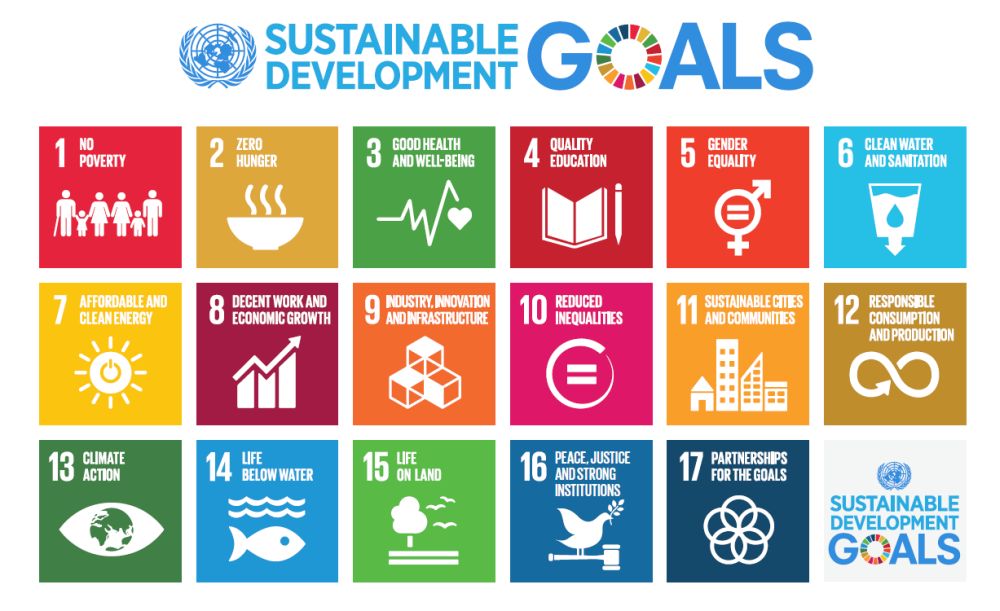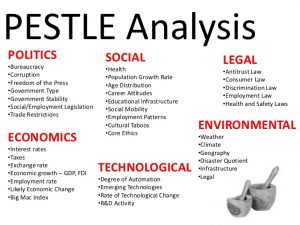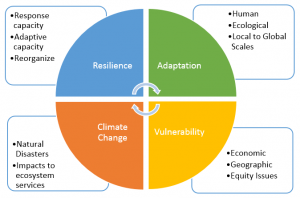Impact of Climate Change on Businesses? An analysis involving the PESTLE framework.
Climate change is happening all around us. Despite those who try to deny it, those who claim it is just nature, and those who bury their heads in the sand, it is here, and, likely, it will only accelerate. Fortunately, the consensus in the real world is that climate change is something we must take action on. So people make both subtle and drastic changes to their lifestyles, diets, and their habits in the hope that it will reduce their carbon footprint.
For businesses, their effects on climate change are multiplied by each member of staff, each facility, each fleet vehicle, each device, each delivery, and more. Knowing that they have such an enormous responsibility and chain of effects, many businesses are now embracing CSR, sustainability, and carbon offsetting as methods of doing something positive as a means of reducing their negative effects on the environment.
Table of contents:
- What is PESTLE Analysis?
- The environmental consideration of the PESTLE analysis
- Climate change PESTLE analysis
- How do businesses consider megatrends in resilience planning?
- Climate change and resource scarcity
- How are some businesses going green and sustainable?
- What is the role of business in climate change?
What is PESTLE Analysis?
PESTLE stands for Political, Economic, Social, Technological, Legal and Environmental. It is a concept in marketing principles to assess different environments in which a business operates and the impact different factors can have. PESTLE analysis is also used while launching a new product or service. It acts as both a quality check as well an assessment of the product for different aspects of the market and industry.
Macro environment PESTLE analysis is one of the methods used to assess the macro environment for businesses.
The environmental consideration of the PESTLE analysis
At the start of the sustainability mission, most businesses will perform a PESTLE analysis internally, or hire a company like Imvelo to come in and show them the ropes.
The PESTLE exercise uses a framework of macro-environmental factors to help guide the strategic management of the business. It is used to figure out if there are considerations to be made regarding law and tax changes, trade barriers, demographic changes, and environmental concerns.
The common denominator between all things discussed during a PESTLE analysis is that they are all factors that influence the organisation, but those which they have no control over. The benefit of doing this analysis is to maximise opportunity and minimise risk. For the environment, and climate change, that means there is a lot to be done.
Good to know: PESTLE stands for “Political, Economic, Social, Technological, Legal and Environmental”
Analysing climate change on businesses using Pestle analysis
What are the environmental factors?
Environmental factors, as part of the PESTLE analysis, refer to the natural resources, ecosystems, and overall physical environment in which an organization operates. They include factors such as:
- Climate change and weather patterns
- Natural disasters, such as floods, hurricanes, and wildfires
- Environmental regulations and laws
- Energy consumption and efficiency
- Waste management and disposal
- Water and air pollution
- Biodiversity and ecosystem protection
- Sustainable practices and initiatives
- Recycling and resource conservation
- Environmental activism and public opinion on environmental issues.
Environmental Factors Affecting Business
Businesses need to be aware of and take steps to address environmental factors because they can have a big effect on their long-term viability. Here are a few instances of natural elements that can have an impact on businesses:
1. Climate change
Climate change can have a substantial effect on business operations, supply chains, and infrastructure. This could be due to changes in weather patterns, rising temperatures, and an increase in the frequency of natural disasters.
2. Environmental laws
Governments everywhere are putting laws into place to cut carbon pollution, boost recycling rates, and encourage sustainability. Businesses may incur higher costs as a result of these laws, which may also limit their ability to enter certain markets.
3. Resource Scarcity
The depletion of natural resources like water and energy may affect supply networks and business operations. Businesses may need to develop fresh approaches to resource management and ethical business conduct.
4. Biodiversity Loss
Businesses reliant on natural resources, such as agribusiness, forestry, and fishing, may be harmed by biodiversity loss.
5. Public Perception
Consumers concerned about environmental problems are more likely to support companies that use sustainable practices. Businesses that overlook environmental issues run the danger of losing their clients and reputation.
6. Green technology
As a result of technological advancements in sectors like energy efficiency and renewable energy, businesses may encounter both opportunities and challenges.
Climate change PESTLE analysis
In the context of climate change, a PESTLE analysis might include the following factors:
Political: Government policies, regulations, and actions related to climate change and the environment.
Economic: The economic costs and benefits of addressing climate change, including the impact on industries and businesses.
Social: The social and cultural attitudes towards climate change and the environment, including public opinion and behaviour.
Technological: The impact of technological developments on climate change, such as renewable energy technologies and energy efficiency measures.
Legal: The legal framework and regulations related to climate change and the environment, including international agreements and national laws.
Environmental: The physical and biological impacts of climate change, including changes in weather patterns, sea levels, and ecosystems.
In conducting a PESTLE analysis of climate change, it is important to consider the potential impacts of these factors on an organization or industry and to consider how the organization or industry can mitigate or adapt to these impacts.
How do businesses consider megatrends in resilience planning?
Let’s be honest, there are very few businesses that can operate in a geographic or industry bubble, exempt from the myriad of political, economic, and commercial factors that commonly influence businesses. It’s almost impossible. Knowing this, managing risks and putting strategies in place to mitigate these factors has become increasingly challenging, meaning that reliable and duteous partnerships with environmental consultancies such as Imvelo ltd have become the norm.
Businesses must now look at the five major megatrends when putting together resilience strategies:
- Regulatory or geopolitical uncertainty
- New technologies
- Strategy challenges
- Talent optimisation
- Operating models
Framework used by environmental consultants
It is under the branch of operating models that environmental consultants can have the greatest impact. Due to the rapidly evolving economic environments that businesses engage in, constant shifts in decisions and strategies are constantly under consideration from even the most resilient businesses.
Operating models encompass things like increasing environmental obligations, exposure to natural disasters, epidemics, social value change, consumer spending power and more. It’s vital in megatrend assessment to use the latest modelling technology and a thorough assessment of supply chains in order to reduce environmental risks such as climate change.
Climate change and resource scarcity
With growing populations around the globe, the demand for food, products and technology is going to rise and rise, pushing the limits of what the Earth can feasibly provide. Many of these items put a high demand on oil, meat, fish, sugar, palm oil, wood, metal and more.
Climate change is already having an effect on productivity for many of these industries, with droughts, bad crops, long winters, and extreme weather taking their toll. Businesses must account for this, and act accordingly, finding ways to reduce their consumption, generate their own energy, and adapt to newer and cleaner technology.
How are some businesses going green and sustainable?
Knowing that climate change will force new approaches, what are some of the interesting business evolutions that we are starting to see? For example:
- Going paper-free in the offices and using digital technology to help accomplish it
- Committing to zero waste strategies that reduce the overall waste output
- Reusing items or buying second hand, to reduce pressure on production and extend the value of asset lifespans
- Generating renewable energy through solar panels and wind turbines
- Switching to an electric fleet of vehicles and installing charging ports on site
- Changing manufacturing policies to include more recycled materials, and redesigning existing products to make them either easier to dismantle or easier to recycle
- Switching to local products, services, and suppliers to reduce their carbon footprint
- Reducing imports
- Embedding a green workplace culture
What is the role of business in climate change?
Businesses exist on both sides of the ‘climate change coin’.
On one side, they are often the most significant polluters, the heaviest consumers of resources, and the facilitators of over-consumption and wastage. But on the other side, they are the ones with the financial resources to counteract it, the manpower to turn ideas into actions, and the huge voices behind communicating change.
With the UN Sustainable Development Goals for 2030 now set in stone, businesses that believe that they will last that long, and who have a progressive mindset, are not waiting around.
Smart businesses are taking action right now. They’re embracing renewable energy, low-carbon tech, sustainable sourcing, innovations and more.
Businesses are pivotal both to and against climate change, but the side of the fence they sit on depends on the actions they take now in support of a more sustainable future.

Sustainable Development Goals
FAQs
What is PESTLE analysis?
PESTLE analysis is a framework that examines the external factors that can affect an organisation. It looks at the political, economic, sociocultural, technological, legal, and environmental factors that can influence the organisation’s performance to identify potential risks and opportunities and to develop strategies to mitigate risks and capitalise on opportunities.
What are environmental factors in a PESTLE analysis?
Environmental factors in PESTLE analysis include the impact of climate change, pollution, resource availability, waste management, regulations and sustainability on an organisation’s operations and reputation.
·
Is PESTLE and environmental analysis the same?
PESTLE analysis is a framework that examines the external factors that can affect an organisation, including political, economic, sociocultural, technological, legal and environmental factors, whereas Environmental analysis is a process of identifying and evaluating the impact of the natural and built environment on an organisation or project. While environmental factors are one of the components of the PESTLE analysis, PESTLE analysis is a broader framework that covers many more factors that can affect an organisation’s performance.
·
When should you not use PESTLE?
PESTLE analysis is a tool to understand external factors affecting an organisation, but it may not be suitable in certain situations such as when the organisation operates in a highly regulated industry, a small niche market, with no major challenges or opportunities or in a crisis mode.
·
What are the 6 elements of PESTLE?
The six elements of PESTLE are Political, Economic, Sociocultural, Technological, Legal, and Environmental factors.
·
Why is PESTLE analysis important?
PESTLE analysis is important as it helps businesses to identify external factors that could impact their operations, and enables them to create a strategic plan to address these factors.
·
Where is PESTLE analysis used?
PESTLE analysis is used in various industries including business, finance, and politics, to assess the external factors that can affect their decision-making process.
·
What is the difference between PESTLE and SWOT?
PESTLE analysis differs from SWOT analysis as it focuses on external factors that impact the organisation, whereas SWOT analysis assesses internal and external factors.







